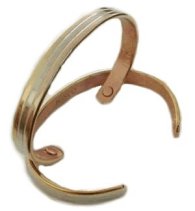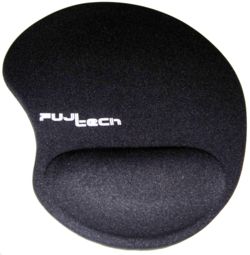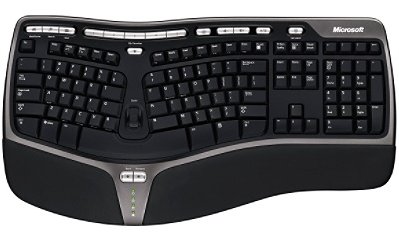|
Workplace accidents are at an all-time high. A decade ago, you
would expect to shear off a toe or two while working at a
warehouse or a shipyard, but with modern society's increasing
need for cubicle-packing office stiffs, the threat of injury has
shifted from one type of lowly peon to another. Theirs, however,
is far more sinister a threat than boiling lead or a falling
piano. An office worker can expect to meet his maker through a
pot of coffee to the face, a disgruntled coworker, or worst of
all, wrist injury!!!
It creeps up on you ever so slowly. One minute, you're plunking
away at your keyboard trying to bang out that spreadsheet before
the end of the say; the next, you're rolling around on the floor
screaming because it feels like the devil has stabbed you in the
wrist with his flaming pencil of the damned. That is why those
clever dogs in HR have come up with a system of
liability-minimizing safety precautions that we call "ergonomics".
I don't need to tell you that it's important to protect your
wrist. It's nearly impossible to dunk a basketball without one.
The problem is that the wrist is an unbelievably complex
apparatus filled with tiny bones and nerves. In many ways, it
serves as the final frontier; less is known about the human
wrist than deep space, or even the depths of the ocean. What we
do know, however, is how you can minimize the chances of having
your wrists snap right off of your forearms by the time you're
old enough to realize your life is half-over.
Wrist injuries are caused by repetitive motions, which can lead
to carpal tunnel syndrome, much in the same way that repetitive
actions can lead to carpal tunnel boredom. Any sort of gripping
motion can cause it, such as using a television remote or arm
wrestling. If you're a professional arm wrestler who enjoys
watching news stories about past exploits, and even if you're
not, you should consider undertaking some of the following
actions to prevent injury:
Exercise

When you're not on the job, make it a point to wear wrist
weights all the time. Doing so will strengthen your wrists and
make those repetitive injuries seem effortless. If you can't
afford store-bought wrist weights, or if your wrist is in too
much pain to open the door of your local sporting goods store,
you can make your own wrist weights by attaching some string to
a suitable surrogate, such as a coconut, or a gallon of milk. If
your wrist isn't supple enough for you to tie the string, just
use a stapler.
Holistic medicine

Consider wearing a pair of magnetic bracelets. These will help
attract and remove lead particles introduced into the body by
way of the company drinking fountains. Be mindful of the
strength of your bracelet, however. A harddrive that has been
accidentally erased can lead to a lot of hair-pulling, and that
can lead to further injury if you haven't stretched properly
beforehand.
Take breaks

Make sure to take frequent breaks when you're on the job.
Whenever stressful wrist activities loom on the horizon, be
prepared to take short breaks every few minutes to relax your
muscles and allow your wrist bones to recombobulate themselves.
Some employers may not appreciate such breaks, but if your boss
should complain to you about your working two minutes to every
three that you spend on break, just show him how flexible and
supple your wrist is compared to his, and ask him if he can put
a price on a wrist like yours.
Ergonomic mousepads

These days, ergonomic mousepads are starting to show up more
often in the workplace. The main difference between an ergonomic mousepad and an ordinary one is that the ergonomic variety have a
cushion where your wrist wrests, I mean rests. Make sure that
the pad itself doesn't have an odd smell before using it.
Repeatedly smelling your wrist can lead to nasal tunnel
syndrome.
Ergonomic keyboards

Coupled with your ergonomic mousepad should be an ergonomic
keyboard. The difference between regular and ergonomic keyboards
is that ergonomic ones typically have the keys arranged in a "V"
shape. A similar design principle can be seen in music, as
guitarists with sore wrists will often switch to flying V
guitars, and wear V-neck undershirts. It's a very ergonomic
letter.
Above all else, you should be aware of your wrists at all times.
If you start to feel a soreness in your wrists, and that
soreness starts to creep up into your hands and down your
fingers, and then back down into your forearms and anaclnasbd...
*Dr. Boogie was unable to finish this article because he wrote
it without taking a break and, subsequently, his biceps rolled
up like window shades.*
If you enjoyed this piece, be sure to check out:

Corporate Diary!
|